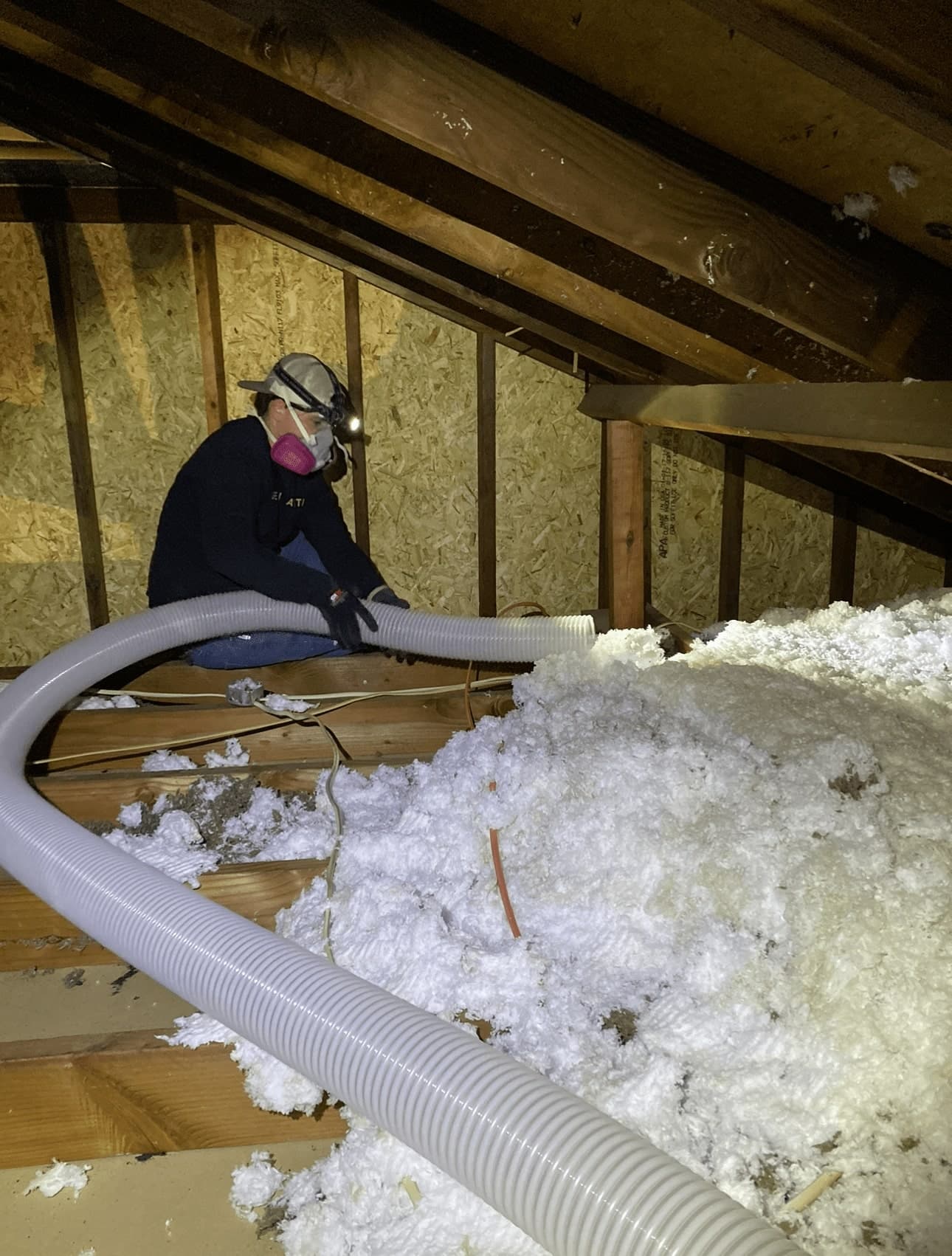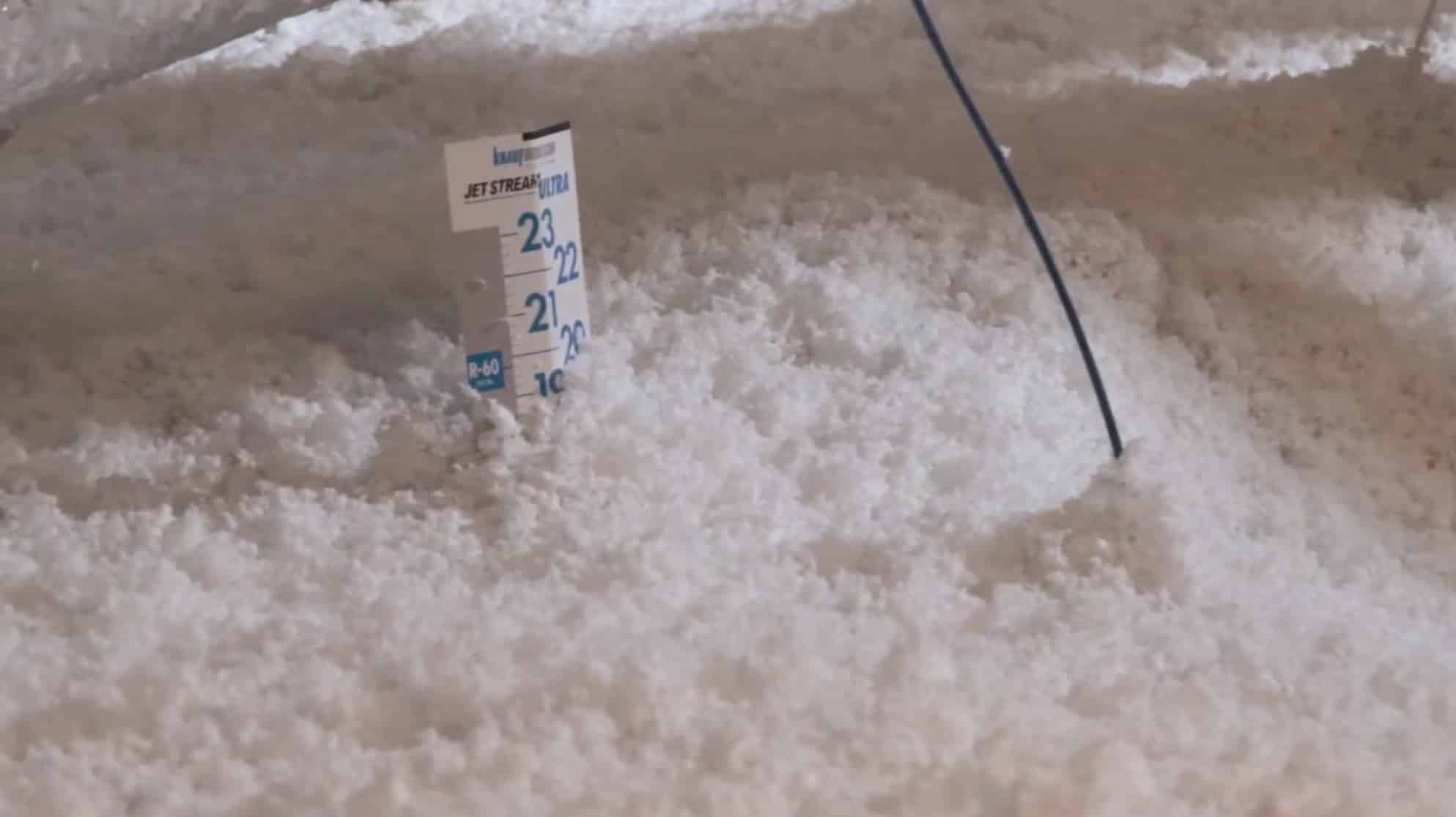Some Known Details About Green Attics
Some Known Details About Green Attics
Blog Article
Green Attics Fundamentals Explained
Table of ContentsThe Main Principles Of Green Attics Not known Details About Green Attics Top Guidelines Of Green AtticsAll about Green AtticsGreen Attics Fundamentals ExplainedSome Known Details About Green Attics
Posted by Solution Champions Air Conditioning BlogWhen you switch on your home heating, you want it to stay inside your home - Attic insulation. Powering up the heating causes the heat to climb straight up right into your attic room. It's after that as much as your attic insulation to do its task and block the warmth from leavingWhich attic insulation is ideal? This post will certainly outline the 4 types of attic room insulation you can choose from, plus dive into the pros and cons of each.

Some Known Facts About Green Attics.
Batts are huge, rolled up sheets of product which are integrated together with a chemical vapor. This vapor acts as a glue. Why is fiberglass batt insulation so prominent? It's several benefits consist of: All at once, fiberglass is considerably eco-friendly. The fiberglass itself is developed from sand which is after that transformed into glass, which counts as a sustainable power source.
Fiberglass batt insulation rarely reduces or falls down. This is due to the air pockets that happen in production. Fiberglass batt insulation is likewise soundproof, aiding decrease external noises and maintain interior sound inside the residential property.

Green Attics for Dummies
If dampness is taken in by the fiberglass batt insulation, it can breed hazardous mold. Rodents and various other unwanted guests enjoy fiberglass batt insulation, and typically make it their home.
When using the blown-in method, it fills the attic better, ensuring it's air-tight. Therefore, it fills up any fractures or voids, also in unpleasant areas. This minimizes the quantity of hot air getting away and cold air going into. It likewise traps noise. The blown-in distribution method is far quicker. It takes a matter of hours to get your attic insulation up and running.
After the insulation has actually resolved, it's proven that the our website R-Value decreases. It requires much more upkeep than other sorts of attic insulation on our listing. Should the insulation obtain damp, removing the insulation isn't as very easy as eliminating fiberglass batts. You'll require to pick it all up, while wearing gloves, and eliminate it gradually.
This attic insulation is additionally blown-in utilizing a blowing equipment, nonetheless the material made use of is different. Boric acid and various other materials are applied to flame-proof the attic room insulation.
Green Attics Can Be Fun For Anyone
(https://www.anobii.com/en/013c51132e476175b5/profile/activity)
Is blown-in cellulose insulation worth it? Below's what it can offer your family: Generally, blown-in cellulose is much better for the planet. With cellulose being made from simply recycled material, there's no demand to generate new product. Recycling this is eco-friendly. The boric acid and other compounds help to fire proof the insulation and slow down the spread of fires.
Blown-in cellulose insulation has an R-Value that is 23 percent greater than fiberglass batts. Cellulose additionally helps minimize wind-washing. What are the cons of setting up blown-in cellulose insulation in your attic? Below are the downsides: Cellulose is environmentally friendly, nonetheless the more materials that are included are not. Boron is called for to create boric acid, and the mining process that mines boron is hazardous to the setting.
Remedying this scenario can be labor and time extensive, as you'll need to select up the insulation bit by bit, instead than in one roll. The final type of attic insulation is spray foam insulation.
An Unbiased View of Green Attics
Unlike all the various other kinds of attic insulation, spray foam insulation is the only kind to come as a liquid. After being sprayed, it thickens and expands, and after that establishes as a resilient foam. This foam slides neatly right into any voids, locking closed, and cuts off any getaway courses for your home heating.
What are the downsides of spray foam insulation?: The in advance repayment for spray foam insulation is higher than the other kinds of attic room insulation on our listing. It's worth thinking about that, due to high levels of energy efficiency, it'll likely stabilize out or even become less costly in the long-run to maintain your home warm.

What Does Green Attics Mean?
Excellent treatment needs to be taken around the foam, and you'll need to wear safety glasses, a mask, and a respirator. With 4 kinds of attic room insulation and their pros and disadvantages, you're now able to make an informed decision, recognizing the advantages and negative aspects to each. That's why I can state with self-confidence that the best means to protect my attic is with inexpensive cellulose or fiberglass insulation used over an impermeable attic floor.
Report this page